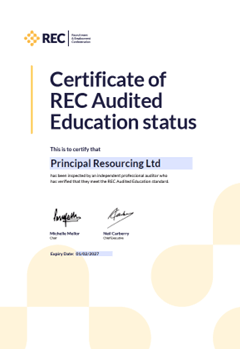As educators, we understand that one of the most important aspects of a child’s education is ensuring they are engaged with their learning. Maintaining students’ attention in your class is challenging, particularly when there is always something new to distract them. Your education career profoundly impacts students, so make the most of their time and make it as engaging as possible.
Teachers, cover supervisors and teaching assistants have an ongoing battle to keep students attentive in class. Research has shown that when students are engaged with their learning, they are more likely to retain information and build skills for the future. So, how can we ensure that they remain connected with their education?
Employing immersive teaching.
We know that student behaviours change over time, so it presents a challenge for teachers to keep up with new ideas and techniques. We have pulled together some top tips to help keep your classroom an engaging place for your students.
Use real-life examples.
If students can relate to a topic, they are more likely to engage and retain the information provided in the lesson. How often have we heard students ask when they will be able to apply algebra in “real life”?
Finding real-world examples will help students engage with topics they find hard to comprehend. For example, back to algebra, applying an example of managing finances helps students understand formulas while also giving them an important life skill.
Provide hands-on experiences.
Everyone is more engaged with a task if they get the opportunity to be involved themselves. Imagine going to a pottery class just to watch a potter throw down some clay. Now imagine being able to get your hands dirty and making your own pot.
Hands-on experiences provide a much more stimulating environment for learning. Even more academic subjects can benefit from being more immersive by allowing a deeper understanding of the topic.
Support independence and choice.
By involving students in decision-making and providing them with choices on the learning process encourages engagement in tasks. Whether they have a choice of projects or groups, giving them the autonomy to take control of certain aspects of learning keeps them involved.
Help keep students engaged by giving them some choice in their learning and how they are learning it.
Get involved with technology.
Today’s students are very engaged with technology, whether on smartphones, tablets or other devices. Harness this interest in the classroom… appropriately, of course.
Using innovations in technology in your classroom is transformative. By using the equipment that youngsters are already involved in on a daily basis keeps them motivated to learn. However, be mindful of the fact that technology isn’t everything; pens and paper still have their place.
Gamification is more than play.
Further to the use of technology in the classroom, take it another step and employ the students’ understanding of gaming to elevate learning. Using gaming elements in other contexts has been shown to increase the engagement of students.
Relating lessons to something that students are passionate about adds context and increases engagement and motivation.
Promote collaboration.
Collaboration encourages new ideas and helps stimulate critical thinking and problem-solving. Collaboration also helps students with their interpersonal skills.
Students who come together with a common goal on a group project will retain information better than passive learning. It also helps to inject some life into the classroom. However, just creating groups or teams of students doesn’t necessarily make collaboration; finding the right task is a challenge. Once you have set them on the right course, the rewards will be truly satisfying for everyone.

Use humour.
Did you hear the one about the teacher who was crossed-eyed? They couldn’t control their pupils. But, with the use of (appropriate) humour in your classroom, you can create a positive environment for your students.
Humour is an excellent way of engaging students, but it can also diffuse tense situations and reduce stress.
Integrate student interests.
As we discussed with using gamification in lessons, using other student interests will increase their attention and engagement. Incorporating student interests helps to show relevance to something they understand to foster deeper learning and engagement.
We all understand topics better if we can relate them to something we know, and this is an extension of that. It also makes them more excited about the information they are presented with. They’ll also feel like you, as a teacher, have shown interest in their life outside the classroom.
Feedback is essential.
Everyone needs feedback. It’s how we improve and develop. Any feedback must be timely and constructive. We all make mistakes; this is an integral part of a student’s learning and should be embraced. By providing constructive and informative feedback helps students to understand how to improve.
Feedback also opens essential discussions that will encourage engagement and deeper learning.
Encourage reflection.
Reflection is something that can come about after good feedback. Reflection deepens a student’s understanding of lessons and their own behaviours and development. By reflecting on their learning, students demonstrate increased engagement.
Increased engagement makes your education career more rewarding.
The information we aim to communicate is only part of the job of a good teacher. A great teacher or teaching assistant is about inspiring and motivating your pupils. Creating an engaging environment for students increases the likelihood of them absorbing lessons and being more successful in the future. This also makes your teaching job so much more fulfilling.
Principal Resourcing has a proud history of providing schools across Yorkshire and Lincolnshire with quality teachers, cover supervisors and teaching assistants. We believe that education has a profound effect on the futures of our youngsters.
Speak to a member of our team to find out how we can help you find the right job for you.

